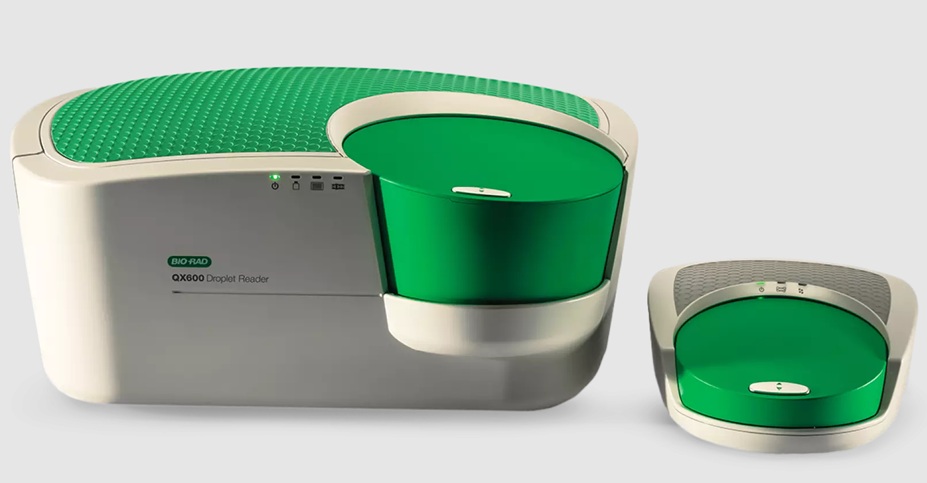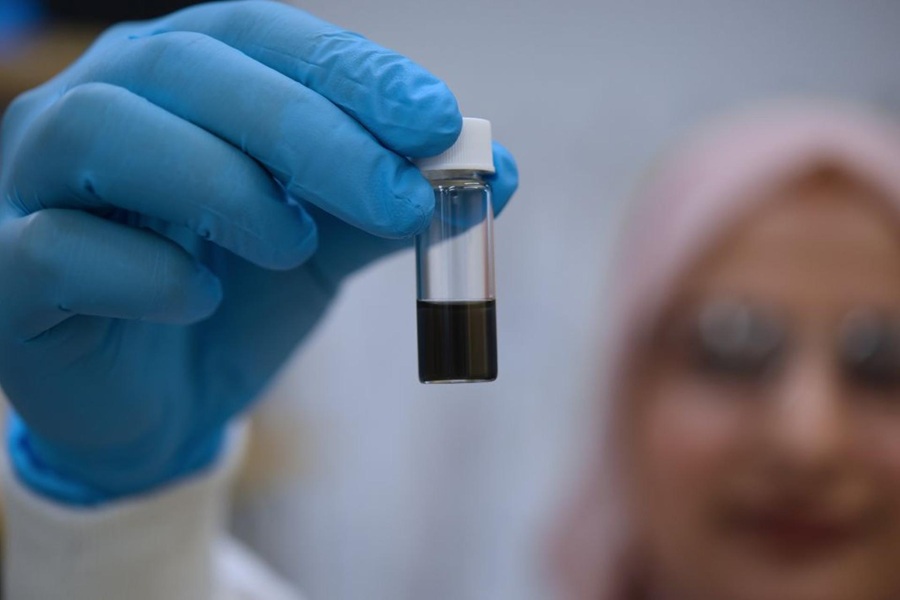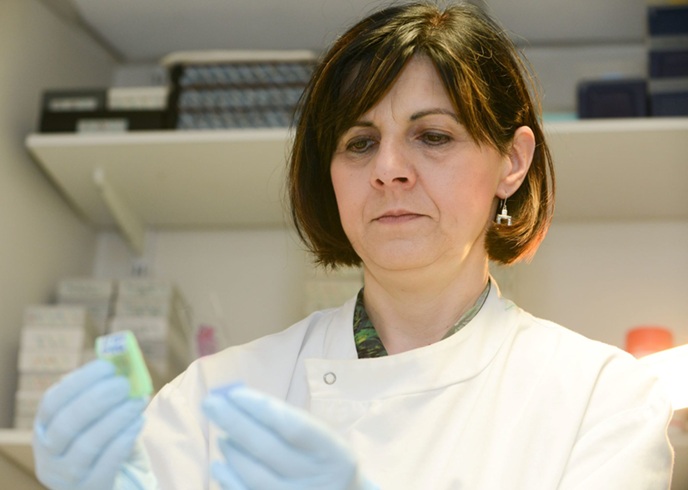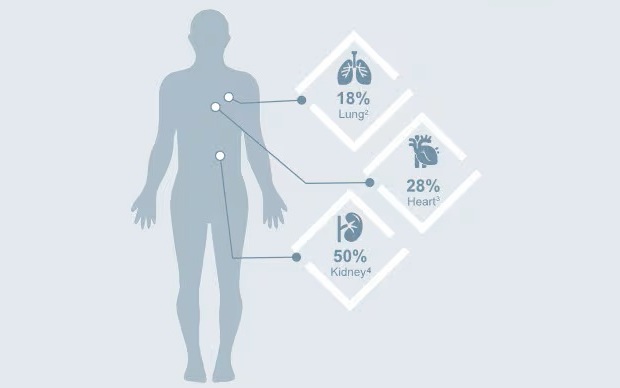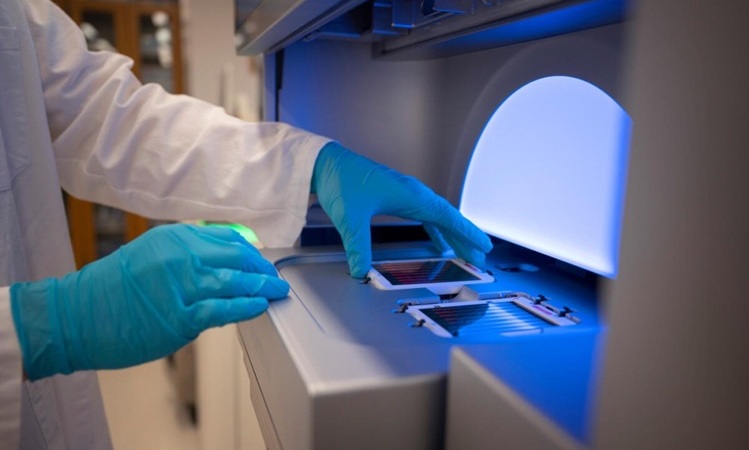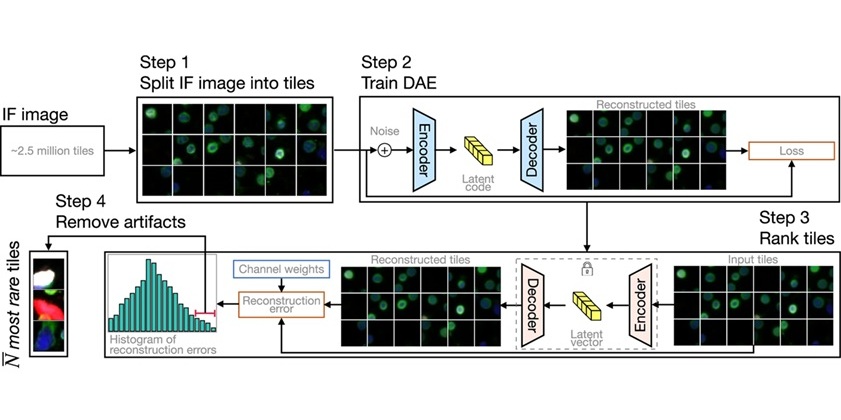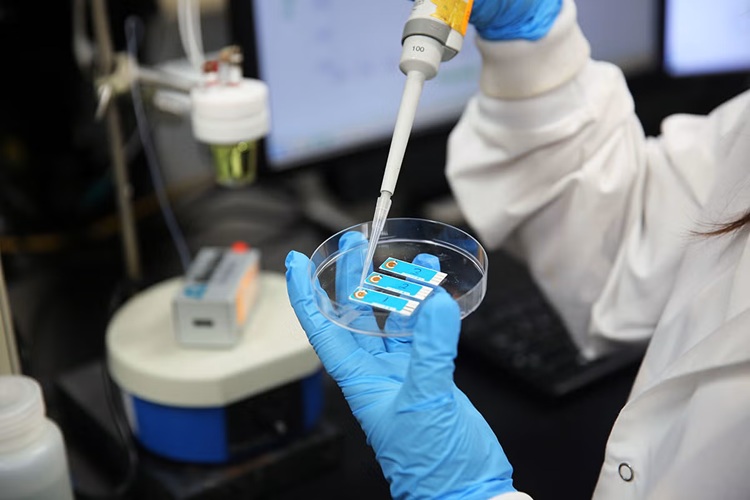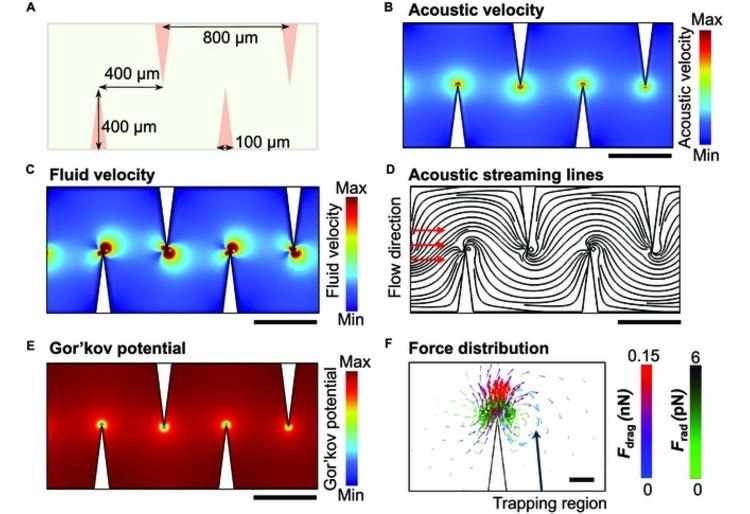Serological Exposure Markers Developed for Vivax Malaria
|
By LabMedica International staff writers Posted on 10 Jun 2020 |

Image: Four Plasmodium vivax parasites have invaded human hepatocytes. Three of the parasites are developing while one parasite, on the lower left, is a dormant hypnozoite, which remains small until its reactivation (Photo courtesy of Nil Gural).
Plasmodium vivax is the most widespread malaria parasite worldwide, with up to two billion people at risk of infection. As well as causing illness and death in its 'active' stage of infection, the parasite can hide as hypnozoites, a dormant stage, in the liver, and is a significant cause of 'relapsing' malaria.
These hypnozoites, undetectable with current diagnostics, can be responsible for more than 80% of all blood-stage infections. Identifying and targeting individuals with hypnozoites is thus essential for accelerating and achieving malaria elimination. A major gap in the P. vivax elimination toolkit is the identification of individuals carrying clinically silent and undetectable hypnozoites.
Medical scientists at the Walter and Eliza Hall Institute of Medical Research (Melbourne, Australia) and their colleagues developed a panel of serological exposure markers capable of classifying individuals with recent P. vivax infections who have a high likelihood of harboring hypnozoites.
The team measured immunoglobulin G (IgG) antibody responses with the AlphaScreen system (Amplified Luminescent Proximity Homogenous Assay, PerkinElmer, Waltham, MA, USA) to 342 P. vivax proteins expressed by a wheat germ cell-free system, invented at Ehime University (Matsuyama, Japan), in longitudinal clinical cohorts conducted in Thailand and Brazil and identified 60 candidate serological markers of exposure.
Candidate markers were validated using samples from year-long observational cohorts conducted in Thailand, Brazil and the Solomon Islands and the antibody responses to eight P. vivax proteins classified P. vivax infections in the previous nine months with 80% sensitivity and specificity. Mathematical models demonstrate that a serological testing and treatment strategy could reduce P. vivax prevalence by 59%-69%.
The authors concluded that the eight antibody responses can serve as a biomarker, identifying individuals who should be targeted with anti-hypnozoite therapy. The test offers new opportunities for improving malaria control and elimination strategies. The study was published on May 11, 2020 in the journal Nature Medicine.
These hypnozoites, undetectable with current diagnostics, can be responsible for more than 80% of all blood-stage infections. Identifying and targeting individuals with hypnozoites is thus essential for accelerating and achieving malaria elimination. A major gap in the P. vivax elimination toolkit is the identification of individuals carrying clinically silent and undetectable hypnozoites.
Medical scientists at the Walter and Eliza Hall Institute of Medical Research (Melbourne, Australia) and their colleagues developed a panel of serological exposure markers capable of classifying individuals with recent P. vivax infections who have a high likelihood of harboring hypnozoites.
The team measured immunoglobulin G (IgG) antibody responses with the AlphaScreen system (Amplified Luminescent Proximity Homogenous Assay, PerkinElmer, Waltham, MA, USA) to 342 P. vivax proteins expressed by a wheat germ cell-free system, invented at Ehime University (Matsuyama, Japan), in longitudinal clinical cohorts conducted in Thailand and Brazil and identified 60 candidate serological markers of exposure.
Candidate markers were validated using samples from year-long observational cohorts conducted in Thailand, Brazil and the Solomon Islands and the antibody responses to eight P. vivax proteins classified P. vivax infections in the previous nine months with 80% sensitivity and specificity. Mathematical models demonstrate that a serological testing and treatment strategy could reduce P. vivax prevalence by 59%-69%.
The authors concluded that the eight antibody responses can serve as a biomarker, identifying individuals who should be targeted with anti-hypnozoite therapy. The test offers new opportunities for improving malaria control and elimination strategies. The study was published on May 11, 2020 in the journal Nature Medicine.
Latest Microbiology News
- High-Throughput Enteric Panels Detect Multiple GI Bacterial Infections from Single Stool Swab Sample
- Fast Noninvasive Bedside Test Uses Sugar Fingerprint to Detect Fungal Infections
- Rapid Sepsis Diagnostic Device to Enable Personalized Critical Care for ICU Patients
- Microfluidic Platform Assesses Neutrophil Function in Sepsis Patients
- New Diagnostic Method Confirms Sepsis Infections Earlier
- New Markers Could Predict Risk of Severe Chlamydia Infection
- Portable Spectroscopy Rapidly and Noninvasively Detects Bacterial Species in Vaginal Fluid
- CRISPR-Based Saliva Test Detects Tuberculosis Directly from Sputum
- Urine-Based Assay Diagnoses Common Lung Infection in Immunocompromised People
- Saliva Test Detects Implant-Related Microbial Risks
- New Platform Leverages AI and Quantum Computing to Predict Salmonella Antimicrobial Resistance
- Early Detection of Gut Microbiota Metabolite Linked to Atherosclerosis Could Revolutionize Diagnosis
- Viral Load Tests Can Help Predict Mpox Severity
- Gut Microbiota Analysis Enables Early and Non-Invasive Detection of Gestational Diabetes
- Credit Card-Sized Test Boosts TB Detection in HIV Hotspots
- Fecal Metabolite Profiling Predicts Mortality in Critically Ill Patients
Channels
Clinical Chemistry
view channel
VOCs Show Promise for Early Multi-Cancer Detection
Early cancer detection is critical to improving survival rates, but most current screening methods focus on individual cancer types and often involve invasive procedures. This makes it difficult to identify... Read more
Portable Raman Spectroscopy Offers Cost-Effective Kidney Disease Diagnosis at POC
Kidney disease is typically diagnosed through blood or urine tests, often when patients present with symptoms such as blood in urine, shortness of breath, or weight loss. While these tests are common,... Read moreMolecular Diagnostics
view channel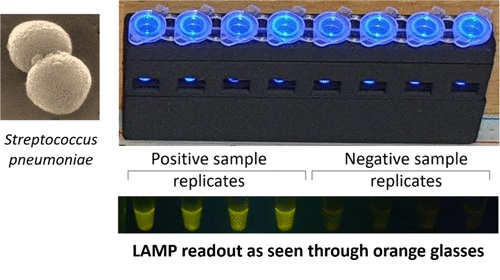
New Diagnostic Method Detects Pneumonia at POC in Low-Resource Settings
Pneumonia continues to be one of the leading causes of death in low- and middle-income countries, where limited access to advanced laboratory infrastructure hampers early and accurate diagnosis.... Read more
Blood Immune Cell Analysis Detects Parkinson’s Before Symptoms Appear
Early diagnosis of Parkinson’s disease remains one of the greatest challenges in neurology. The condition, which affects nearly 12 million people globally, is typically identified only after significant... Read moreHematology
view channel
ADLM’s New Coagulation Testing Guidance to Improve Care for Patients on Blood Thinners
Direct oral anticoagulants (DOACs) are one of the most common types of blood thinners. Patients take them to prevent a host of complications that could arise from blood clotting, including stroke, deep... Read more
Viscoelastic Testing Could Improve Treatment of Maternal Hemorrhage
Postpartum hemorrhage, severe bleeding after childbirth, remains one of the leading causes of maternal mortality worldwide, yet many of these deaths are preventable. Standard care can be hindered by delays... Read more
Pioneering Model Measures Radiation Exposure in Blood for Precise Cancer Treatments
Scientists have long focused on protecting organs near tumors during radiotherapy, but blood — a vital, circulating tissue — has largely been excluded from dose calculations. Each blood cell passing through... Read moreImmunology
view channel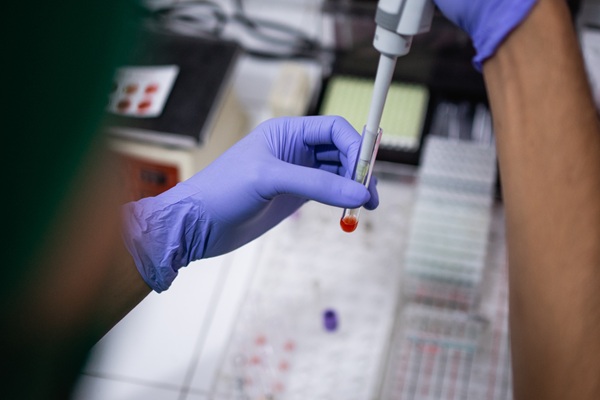
Blood-Based Liquid Biopsy Model Analyzes Immunotherapy Effectiveness
Immunotherapy has revolutionized cancer care by harnessing the immune system to fight tumors, yet predicting who will benefit remains a major challenge. Many patients undergo costly and taxing treatment... Read more
Signature Genes Predict T-Cell Expansion in Cancer Immunotherapy
Modern cancer immunotherapies rely on the ability of CD8⁺ T cells to rapidly multiply within tumors, generating the immune force needed to eliminate cancer cells. However, the biological triggers behind... Read morePathology
view channel
New Molecular Analysis Tool to Improve Disease Diagnosis
Accurately distinguishing between similar biomolecules such as proteins is vital for biomedical research and diagnostics, yet existing analytical tools often fail to detect subtle structural or compositional... Read more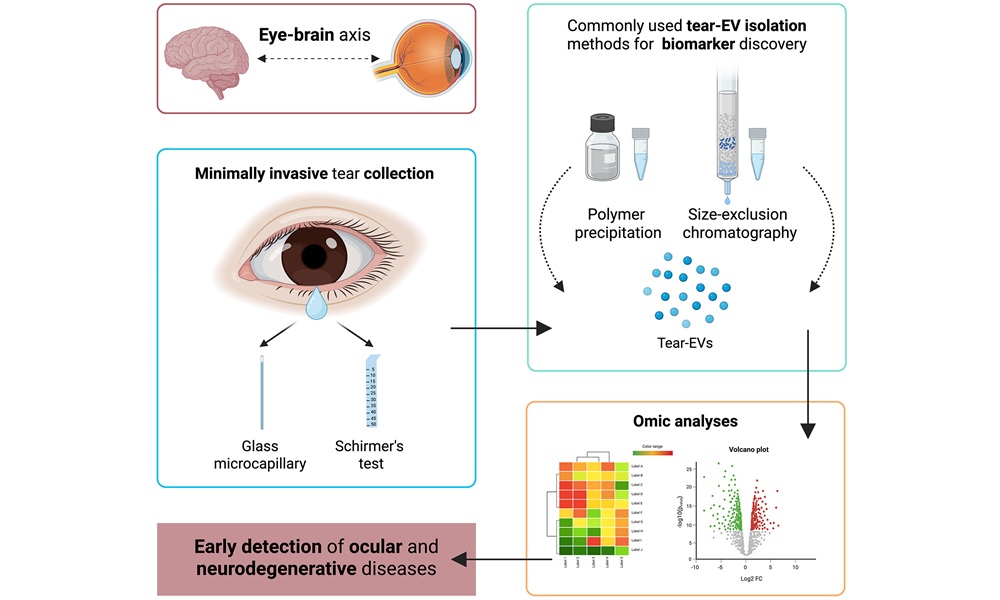
Tears Offer Noninvasive Alternative for Diagnosing Neurodegenerative Diseases
Diagnosing and monitoring eye and neurodegenerative diseases often requires invasive procedures to access ocular fluids. Ocular fluids like aqueous humor and vitreous humor contain valuable molecular information... Read moreTechnology
view channel
Cell-Sorting Device Uses Electromagnetic Levitation to Precisely Direct Cell Movement
Sorting different cell types—such as cancerous versus healthy or live versus dead cells—is a critical task in biology and medicine. However, conventional methods often require labeling, chemical exposure,... Read more
Embedded GPU Platform Enables Rapid Blood Profiling for POC Diagnostics
Blood tests remain a cornerstone of medical diagnostics, but traditional imaging and analysis methods can be slow, costly, and reliant on dyes or contrast agents. Now, scientists have developed a real-time,... Read moreIndustry
view channel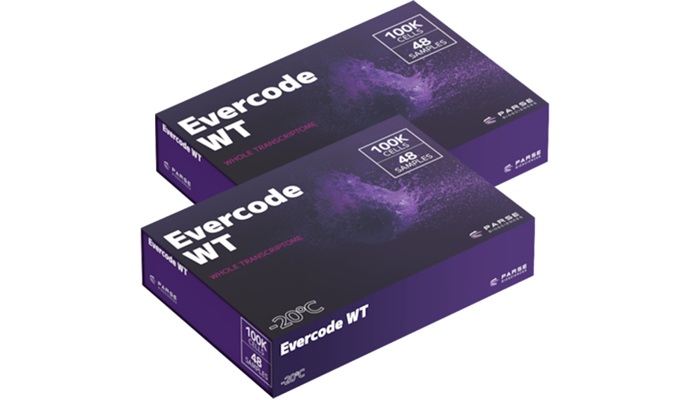
Qiagen Acquires Single-Cell Omics Firm Parse Biosciences
QIAGEN (Venlo, Netherlands) has entered into a definitive agreement to fully acquire Parse Biosciences (Seattle, WA, USA), a provider of scalable, instrument-free solutions for single-cell research.... Read more
Puritan Medical Products Showcasing Innovation at AMP2025 in Boston
Puritan Medical Products (Guilford, ME, USA), the world’s most trusted manufacturer of swabs and specimen collection devices, is set to exhibit at AMP2025 in Boston, Massachusetts, from November 11–15.... Read more
Advanced Instruments Merged Under Nova Biomedical Name
Advanced Instruments (Norwood, MA, USA) and Nova Biomedical (Waltham, MA, USA) are now officially doing business under a single, unified brand. This transformation is expected to deliver greater value... Read more